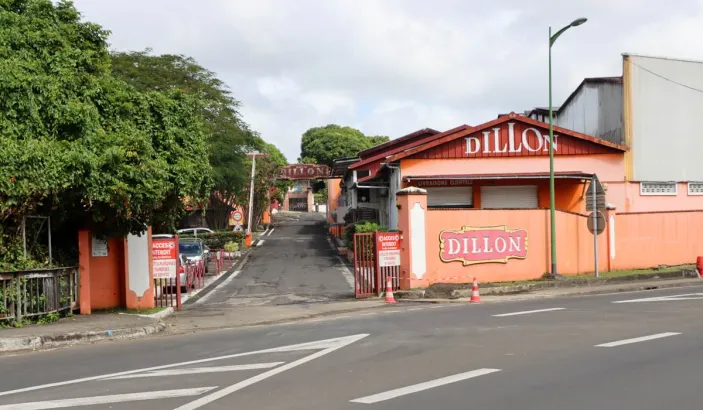History
Origins and the Construction of Fort-Royal
Fort-de-France is the capital of Martinique, located in the heart of the island, bordered by Schœlcher to the west, Fonds-Saint-Denis to the north, and Saint-Joseph and Le Lamentin to the east.
Its history predates colonization, as the area was inhabited by the Caribs for centuries before the arrival of the French. When the French colonists arrived, the island was divided: the Caribs settled on the windward (Atlantic) coast, while the French chose the leeward (Caribbean) coast.
Initially, Saint-Pierre was built at the mouth of the Roxelane River. Due to colonial conflicts and the strategic importance of the bay, a fort was constructed on the heights of what is now Fort-de-France—a site easier to defend and more sheltered from storms than Saint-Pierre.
In 1639, Governor Jacques Dyel du Parquet established a palisade fort called Fort-Royal. Later, on October 3, 1669, Governor Jean-Charles de Baas officially founded the town under that name. Swamp drainage and urban planning began, with Colbert approving the street layout in 1671.
Despite efforts, construction faced challenges: unstable soil and malaria from the marshes caused high mortality. Hydraulic improvements took over a century to complete.
In 1674, the famous “Battle of Fort-Royal” occurred between the Dutch and French, securing the island for France. In 1677, Count de Blénac succeeded de Baas and completed the town’s construction, transferring the General Government and Governor’s Palace from Saint-Pierre to Fort-Royal in 1692, making it the administrative capital.
Colonial Conflicts and Natural Disasters
In 1738, an earthquake struck Fort-de-France, though its effects remain unknown. After a failed naval attack in 1759, the British captured Fort-Royal by land in 1762. The island was returned to France in 1763 via the Treaty of Paris.
Georges-René Pléville Le Pelley was appointed port captain and revitalized maritime commerce. He was later replaced by Robert Tascher de la Pagerie, father of future Empress Joséphine.
From Fort-Royal to Fort-de-France
In 1794, following the abolition of slavery in French colonies, local landowners allied with the British, who seized the island. Martinique did not experience the 1794 abolition. In 1802, General Villaret-Joyeuse’s arrival marked the island’s return to France under the Treaty of Amiens.
In 1807, under Napoleon’s Empire, Fort-Royal was renamed Fort-de-France and became the colony’s capital, though Saint-Pierre remained the cultural and economic hub.
After slavery’s final abolition, Fort-de-France grew with freed slaves and mixed-race populations. Its population rose from 9,200 in the early 1800s to 17,000 by 1876, though agriculture still dominated employment.
The city endured several disasters:
- Earthquake on January 11, 1839
- A massive fire on June 22, 1890 destroyed ¾ of the city, including 1,600 wooden houses, the market, and Saint-Louis Cathedral
- A deadly cyclone in 1891 killed over 400 people
Fort-de-France becomes the sole capital
Ironically, it was the 1902 eruption of Mount Pelée that made Fort-de-France the island’s sole capital. Saint-Pierre was obliterated, with only two survivors. Northern residents migrated to Fort-de-France, which took over industrial and commercial roles.
Mayor Victor Sévère revived the sanitation and urbanization of Terres-Sainville, a swampy area northwest of the city. By 1920, a modern working-class neighborhood emerged, followed by Sainte-Thérèse, Morne Pichevin, and Dillon.
In the 1930s, colonial-style residences were built on the city’s heights, contrasting with the modest downtown.
The sugar crisis accelerated rural exodus and migration to mainland France (BUMIDOM), shifting employment toward administrative services.
In 1946, when Martinique became a French department, Fort-de-France had 60,600 residents. By 1975, it reached 100,000, though 40% of homes were unauthorized, and a quarter of the population lived in slums.
Mayor Aimé Césaire initiated large-scale social housing projects between 1960 and 1980, resulting in the development of neighborhoods such as Dillon, Floréal, Bon-Air, Calebasse, and Châteaubœuf. Residential areas like Cluny, Bellevue, and Des Rochers also developed.
Since 1990, Fort-de-France’s population has declined in favor of nearby towns like Schœlcher, Saint-Joseph, Le Lamentin, and Ducos, which offer suburban housing.
By 2025, the population had dropped below 75,000. Urban renewal projects aim to restore its appeal, including the Pointe Simon business center and Perrinon shopping mall.
Economy
Fort-de-France is Martinique’s administrative and commercial hub, hosting the prefecture, the Territorial Collectivity, and many local businesses. It concentrates most jobs and commercial activity but faces structural challenges like demographic decline and budget constraints.
In 2023, the city had a €15.9 million municipal deficit. Cost-cutting measures in 2024 helped reduce expenses, with a balanced budget projected for 2025.
New businesses emerged in 2024, but growth remains modest due to demographic and fiscal pressures. Tourism remains a key economic driver, supported by cruise traffic and cultural events.
Neighborhoods
Fort-de-France has over 135 neighborhoods. Key ones include: Balata, Bellevue, Canal Alaric, Châteaubœuf, Citron, Clairière, Cluny, Coridon, Crozanville, Desrochers, Didier, Dillon, Godissard, Fond d'Or, Jambette-Beauséjour, Langellier-Bellevue, La Meynard, La Médaille, L'Ermitage, Montgérald, Morne Calebasse, Morne Laurent, Morne Morissot, Morne Pichevin, Morne Tartenson, Morne Venté, Moutte, Pointe de la Vierge, Pointe des Sables, Pointe des Nègres, Post-Colon, Ravine-Bouillé, Ravine-Vilaine, Redoute, Renéville, Rodate, Rive Droite (Bo Kannal), Sainte-Catherine, Sainte-Thérèse, Terres-Sainville, Texaco, Tivoli, Trénelle, Volga-Plage.








